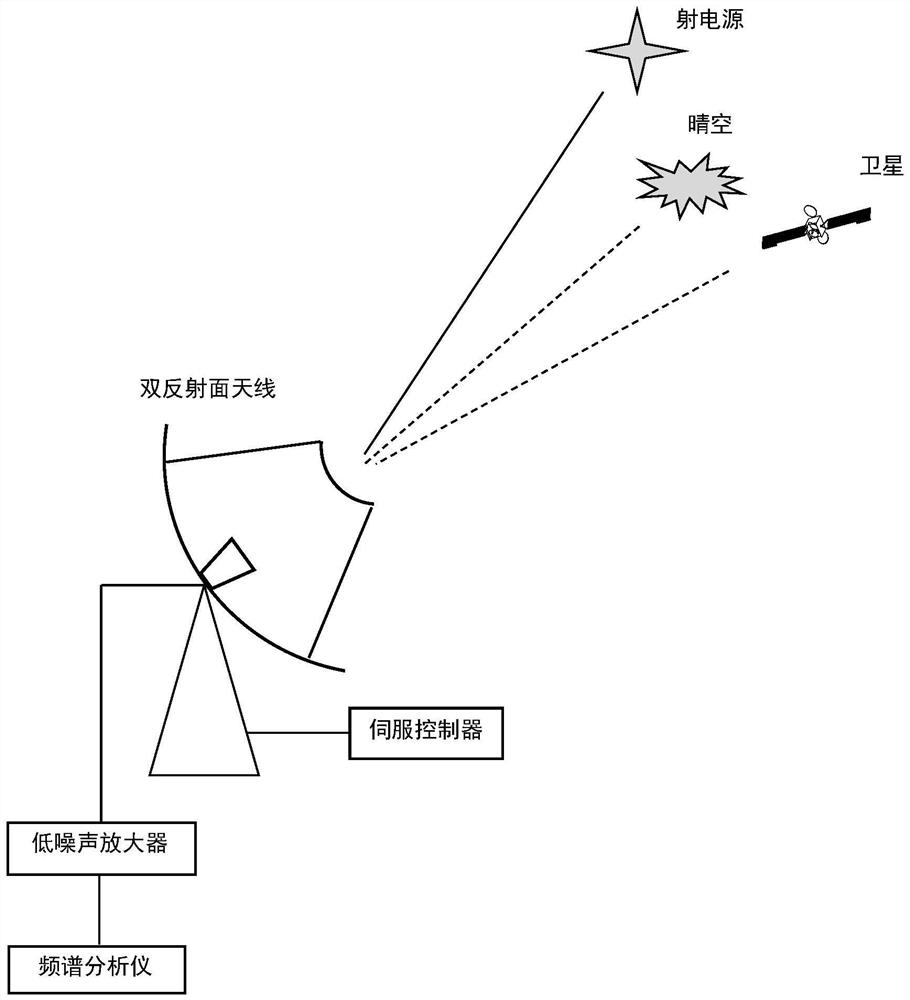Method for measuring loss of large-scale double-reflector antenna
A dual-reflector, antenna loss technology, applied to the antenna radiation pattern and other directions, can solve problems such as large measurement errors, and achieve the effects of suppressing influence, promoting and applying value, and high measurement accuracy
- Summary
- Abstract
- Description
- Claims
- Application Information
AI Technical Summary
Benefits of technology
Problems solved by technology
Method used
Image
Examples
Embodiment Construction
[0049] A method of measuring the loss of a large dual reflector antenna, comprising the following steps:
[0050] (1) Measure the power gain of the antenna. By measuring the Y factor of the ratio of the noise power of the large double-reflector antenna to the radio source and its nearby clear sky, the power gain of the antenna is calculated using the following formula.
[0051]
[0052] where:
[0053] G—the power gain of the antenna, dBi;
[0054] k—Boltzmann constant, k=1.38×10 -23 J / K;
[0055] T—Antenna system noise temperature, K;
[0056] λ—working wavelength, m;
[0057] S—the flux density of the radio source, Wm -2 Hz -1 ;
[0058] Y - the measured Y factor;
[0059] K 1 - Atmospheric attenuation correction factor, dB;
[0060] K 2 - Beam widening correction factor, dB.
[0061] (2) Measured antenna directivity gain. Using satellite beacons, measure the azimuth power pattern and elevation power pattern of the antenna, and use P for the azimuth power pat
PUM
 Login to view more
Login to view more Abstract
Description
Claims
Application Information
 Login to view more
Login to view more - R&D Engineer
- R&D Manager
- IP Professional
- Industry Leading Data Capabilities
- Powerful AI technology
- Patent DNA Extraction
Browse by: Latest US Patents, China's latest patents, Technical Efficacy Thesaurus, Application Domain, Technology Topic.
© 2024 PatSnap. All rights reserved.Legal|Privacy policy|Modern Slavery Act Transparency Statement|Sitemap



